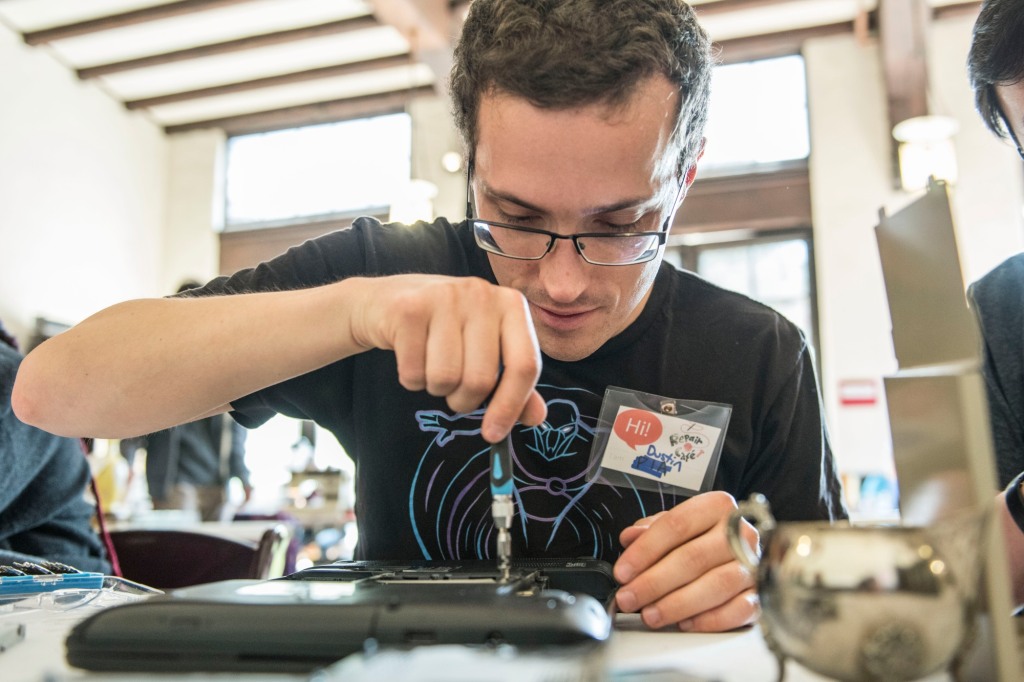My “unfixable electronics” bin weighs almost as much as I do.
There’s the ancient iPad, where the kids made “Talking Tom” tell potty jokes, dropped one too many times. And ah, my beloved Microsoft Surface, where I could scribble notes with an electronic pen — it died immediately after I bought it that beautiful black-and-white leather case. And, um, there’s the Surface before it, with the spider-web shattered screen…. It was perched on the dining room table — cord taut to the wall — when the dogs gave chase. “Computer shotput” is how I remember it. And the phones … all those phones!
I’ve saved these seemingly useless electronics because, even though their makers said they couldn’t be fixed, it seemed clear that their makers simply wouldn’t fix them.
“When something breaks, you fix it. That’s just common sense. But manufacturers of everything from phones to appliances to tractors intentionally make things difficult to repair,” says a new study by the California Public Interest Research Group and its national affiliate.
Enter then “The Right to Repair Act,” Senate Bill 244 by Sen. Susan Talamantes Eggman, D-Stockton. It would allow individuals and independent repair shops access to the tools, parts and, vitally, manuals, needed to fix what’s broken.
It could shatter “manufacturers’ repair monopolies,” feed the growing independent “Repair Cafe” movement, lead to less electronic waste and save consumers money, supporters said.
American households spend about $1,767 every year buying new electronics, a 19% increase in just two years, despite falling prices for many items, CALPIRG found.
“And even as the financial burden of replacing broken laptops, refrigerators and other electronic products increases, so does the toll on the environment,” it said. “Disposable is not a word that should describe our electronics, but we are turning over our gadgets far too quickly. And when we dispose of electronics, we’re…
Read the full article here






